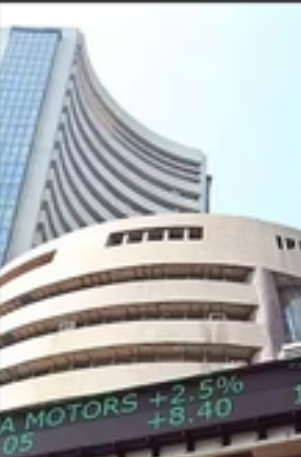
Sensex
- Foreign investors are shifting from India's secondary market stocks to new listings in the primary market.
- The Indian primary market has been particularly active this year, with IPO listings amounting to $7.3 billion - the highest in Asia.
- This shift in investment strategy comes as the Federal Reserve is expected to lower interest rates, making riskier markets like India more attractive.
- Despite risks, foreign investors remain optimistic about the potential for significant long-term growth in the Indian market.
In a significant shift in investment strategy, foreign investors are moving away from India's secondary market stocks, which are currently trading at record highs. Instead, they are turning their attention to new listings in the primary market. This move is driven by the desire for cheaper market exposure and the potential for better returns.
According to data from India's Central Depository Services Ltd., foreign investors have sold a net $3.42 billion worth of equities in the secondary market this month. In contrast, they have purchased a net $1.47 billion through primary market issuances. This trend indicates a clear preference for initial public offerings (IPOs), which typically have lower valuations and less competition for stocks.
Historically, investors have often turned to primary markets during periods of high valuations in secondary markets. This is because new listings often offer attractive investment opportunities at lower prices.
India's Primary Market Outshines Asia
The Indian primary market has been particularly active this year, with IPO listings amounting to $7.3 billion - the highest in Asia. This surpasses China's IPO listings, which stand at $5.1 billion, according to Dealogic data.
Experts suggest that the lower valuations in the primary market are due to less competition from retail, index, ETFs, and most types of institutional investors. Jon Withaar, head of Asia Special Situations at Pictet Asset Management, explains that companies offering IPOs or rights issues tend to price their shares conservatively to ensure a successful launch and attract more investor interest.
Michael Collins, CEO of WinCap Financial, echoes this sentiment, stating that this lower valuation may also be seen as an opportunity for foreign investors who believe that these companies have potential for significant growth in the long run.
The Impact of Global Monetary Policies
This shift in investment strategy comes at a time when the Federal Reserve is expected to lower interest rates. This move is likely to make riskier markets, such as India, more attractive to foreign investors seeking higher returns.
However, this trend is not without risks. The secondary market's high valuations are partly due to moderated earnings growth prospects. Furthermore, India's NSE Nifty 50 index has risen 14% this year, and the 12-month price-to-earnings ratio for its large-and-mid cap stocks stands at 24 times, the highest among major global markets, according to LSEG data.
Despite these challenges, foreign investors remain optimistic about the potential for significant long-term growth in the Indian market. This optimism is reflected in the fact that foreigners have bought more than $6 billion of stocks on the primary market this year, the highest since 2021, according to a report by Societe Generale.
In conclusion, the shift in foreign investment from India's secondary market to its primary market reflects a strategic response to high valuations and moderated earnings growth prospects. While this trend carries risks, it also presents opportunities for significant long-term growth. As the Federal Reserve prepares to lower interest rates, it is likely that foreign investors will continue to seek out these opportunities in the Indian market, reinforcing the importance of the primary market as a key avenue for foreign investment in India.
* This is a contributed article and this content does not necessarily represent the views of btin.co.in









